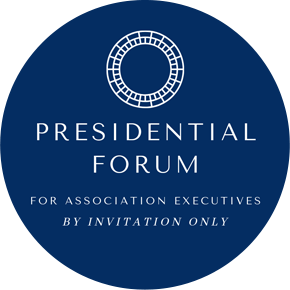December 3, 2020
Survey Results, Presidential Forum CFO/COO Roundtable
December 3, 2020
- What are your biggest challenges to effective communication in the organization?
- The time to plan deliberate and strategic messaging.
|
- Currently, working remotely. Usually, the quantity of work we do on a daily basis often interferes with communicating internally.
|
- Time and staff size. We’re a relatively small organization, so everyone is stretched thin and occupied. People rely heavily on email.
|
- Collaboration and synergy among/between departments
|
- That is it clear and understood.
|
- Little interdepartmental communication and empowering employees to speak up
|
|
|
- Adapting to disruption and communicating in a virtual and remote work environment
|
- Building relationships beyond the work to help facilitate better communication. We also struggle with effective ways to disagree or productive conflict.
|
- Communicating via video formats – difficult to “read” non-verbal clues in a group that tends to remain silent.
|
- Currently, working from home and not seeing each other on a regular basis. I believe we were always departmentalized, this has increased that.
|
- The lack of communication across departments, and I think it’s gotten worse during this work from home period.
|
- Communicating effectively as the speed of activities ramps up in relation to the virtual work environment.
|
- Trust, transparency. This allows people to be vulnerable; give and receive feedback without ego.
|
- Messaging to broad audience can be challenging because of different interests
|
|
|
- Innovation is driven by member wants and needs, not by staff deciding what members want.
|
- people who do not want to take the time to listen
|
- Right now the biggest challenge is effective collaboration. Virtual meetings just aren’t working as well as in person historically has and we’re suffering for it.
|
- Availability. Urgency to get things done.
|
- Lack of desire to read anything longer than 2 sentences.
|
- two issues: remote work generational divide
|
- Ensuring that what I say is interpreted in the way in which I meant to communicate the information.
|
- With remote working, ensuring everyone is receiving the info and absorbing it.
|
- What best practice has your department or organization implemented to improve the effectiveness of communications?
- For marketing, use of analytics.
|
- Weekly departmental meetings
|
- A standing weekly check-in with a supervisor. It allows team members to think critically and strategically about what has happened, what needs to happen, and solutions to problems.
|
|
|
- Monthly all team meetings Slack channels
|
- Standing 10 minute checking with team to ensure sharp focus
|
- Made thoughtful efforts to rethink communication patterns and adopt and experiment with new communication methods and frequencies and not go dark by avoiding periods of quiet
|
- Increased the use of anonymous polls following communicating information that has an impact on the organization to see if there are unanswered questions.
|
- We’ve tried a few things-changing the format of all staff meetings, encouraging cross-team meetings-and they have not been very successful.
|
- Communicate in all directions.
|
- Developed personas to categorize members
|
- Short, three-time-a-week staff Zoom calls; and Share-point document collaborative tools
|
- Outreach to our members. Changing post-event evaluations to gather specific information on wants and needs. Specifically asking members “why the joined/renewed” and what they need from us to stay a member.
|
- outreach to individuals, one on one
|
- Follow up every conversation with an email outline of what was discussed, outcomes and timelines
|
- Some weekly meetings, and larger strategy related meetings 2x per month.
|
- Frequently touch base one-on-one
|
- In this age of COVID, we try to ensure that everyone attends meetings with their camera on. It can make a difference when you are virtually face-to-face rather than staring at someone’s name on a screen.
|
- Weekly virtual stand up meetings for all staff to announce news and then individual department meetings to relay deeper details (leaders are given talking points and FAQs so all are saying same thing)
|

CPE Compliance Disclosure:
COURSE DESCRIPTION:
In this course, you will learn how your conversations as a leader can help drive the quality of relationships and results in your association.
LEARNING OBJECTIVES:
- Learn to identify and overcome challenges to effective communication in your organization
- Learn best practices for effective communication
- Learn what strategies your association peers are implementing to improve communications
INSTRUCTOR(S):Moderated Roundtable Discussion of Association Executives led by Richard Yep, Chief Executive Officer, American Couseling Association (ACA).
DELIVERY METHOD: Group live presented online due to COVID-19
CPE CREDITS: 1.5
LEVEL: Intermediate
NASBA CATEGORY: Business Management and Org
CAE Field of study: Leadership
PREREQUISITES: C-Level Management Experience
In accordance with the standards of the National Registry of CPE Sponsors, CPE credits have been granted based on a 50-minute hour.
U.S Transactions Corp. (CPE Sponsor ID: 138278) is registered with the National Association of State Boards of Accountancy (NASBA) as a sponsor of continuing professional education on the National Registry of CPE Sponsors. State boards of accountancy have final authority on the acceptance of individual courses for CPE credit. Complaints regarding registered sponsors may be submitted to the National Registry of CPE Sponsors through its website: www.NASBARegistry.org.

